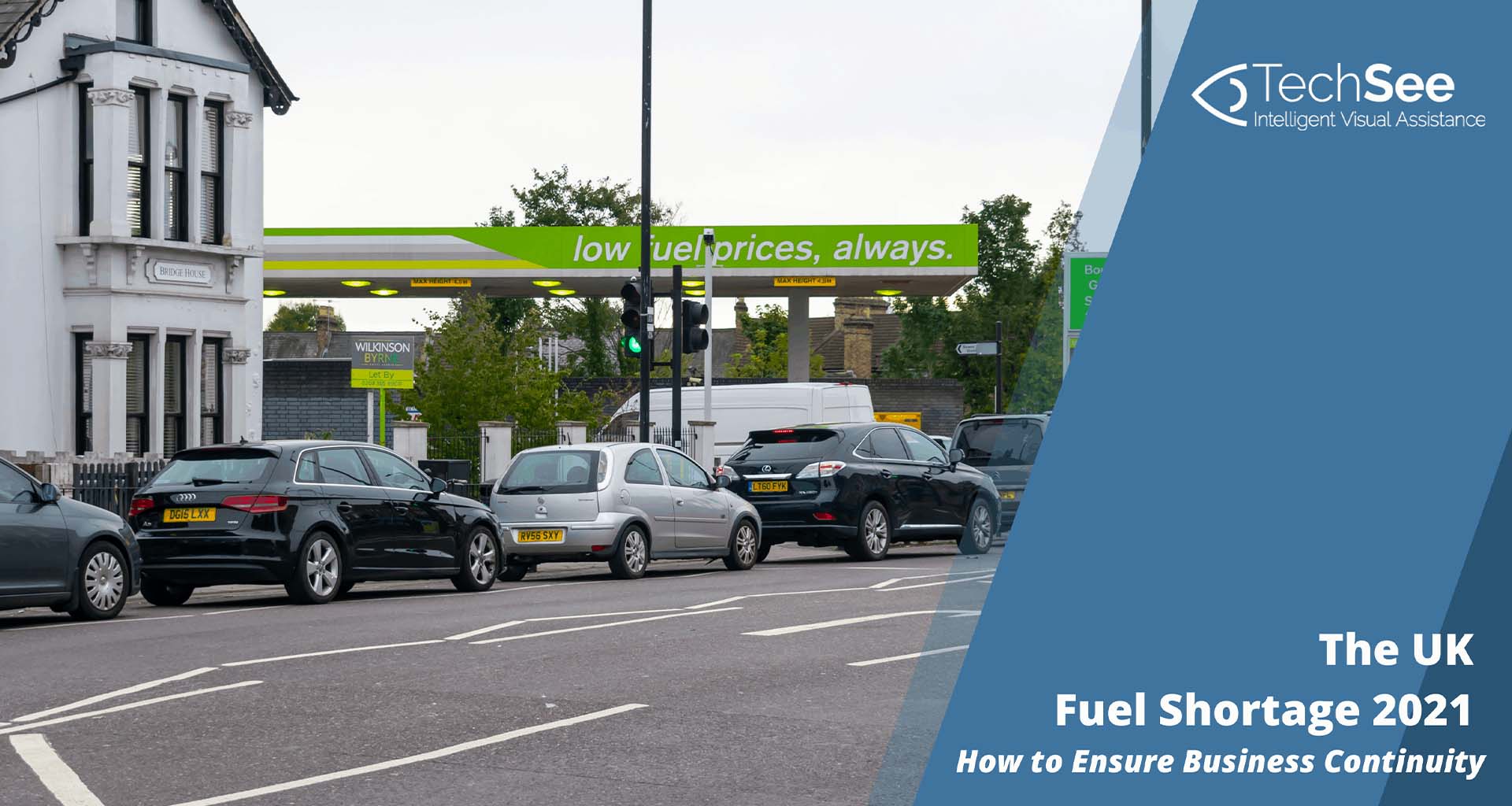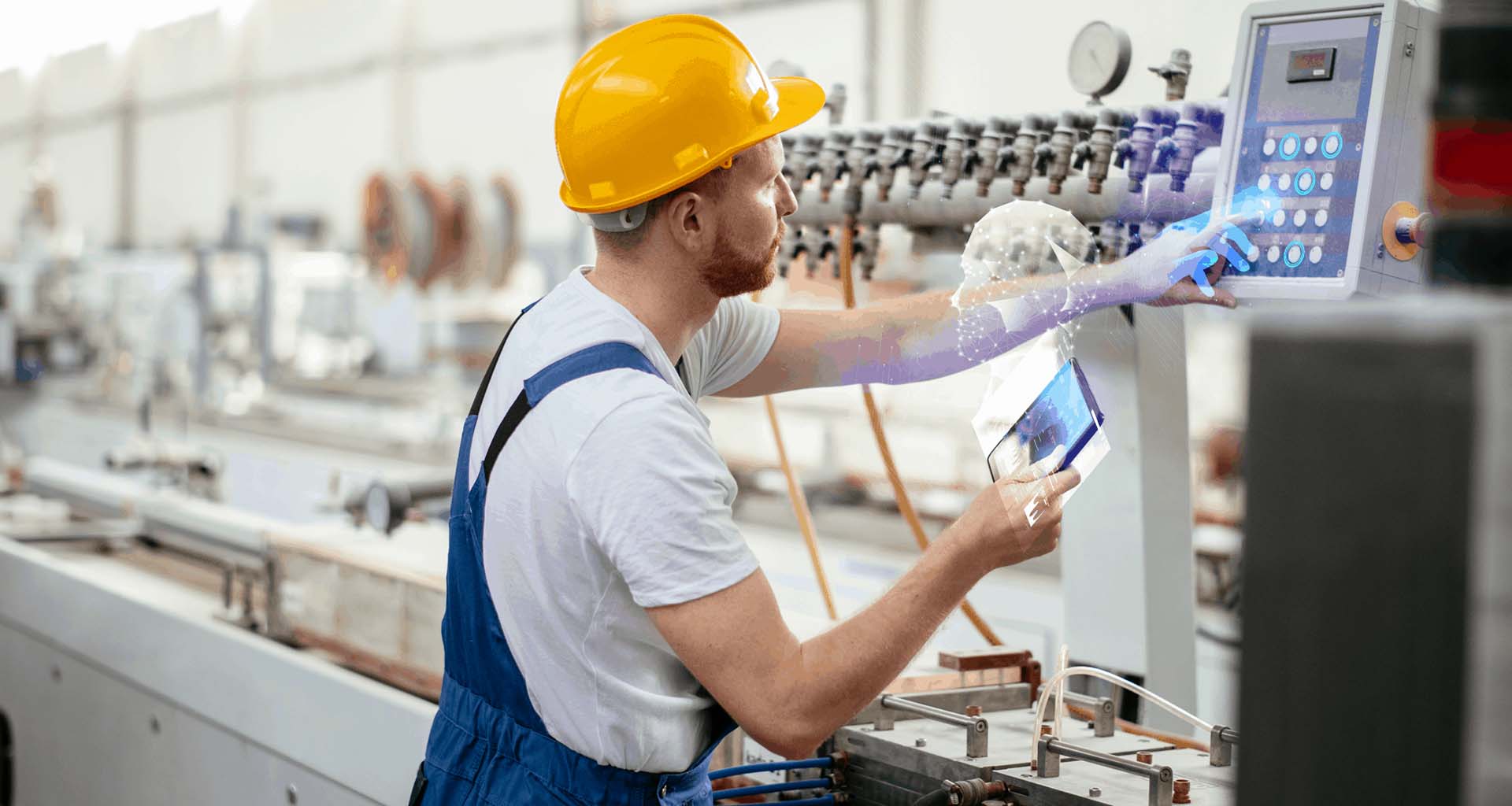Contents
- Where have all the lorry drivers gone?
- The Brexit Petrol Shortage
- Provide Continuous Service Despite the Fuel Shortage
- Expect the Unexpected with Remote Visual Assistance
- 5 Ways Visual Engagement Ensures Stability During the Petrol Shortage
- Visual Assistance: The Key to Staying Afloat During Fuel Shortages & Pandemics
With drivers queued up for hours waiting for petrol and station after station simply out of fuel, Britain’s fuel shortage is making headlines. But this time, the issue isn’t a global pandemic or foreign political unrest that has caused some petrol stations to introduce a £30 cap on the amount of petrol people can buy. Believe it or not, it’s the lack of lorry drivers.
Where have all the lorry drivers gone?
After Brexit, many European lorry drivers left the UK because new border bureaucracies were resulting in a negative impact on their take-home pay. The UK lost even more drivers during the pandemic when furloughed drivers chose not to return to their jobs when large parts of the economy shut down. On top of that, older drivers are retiring in droves, and new drivers cannot be onboarded at similar rates due to a backlog in available HGV (heavy goods vehicle) driver tests. The Road Haulage Association (RHA) estimates a shortage of more than 100,000 HGV drivers in the UK.
The Brexit Petrol Shortage
While the lack of drivers affects many industries, the fuel shortage is the most acute. This is because fuel tanker drivers need additional qualifications aside from their HGV license in order to be able to transport petrol, making these drivers an even rarer commodity.
Provide Continuous Service Despite the Fuel Shortage
The UK’s petrol shortage is negatively affecting industries that provide field services to their customers. Fuel shortages and high petrol prices have made it significantly more expensive to dispatch trucks to service customers for field service organisations in industries such as:
- telecom
- HVAC
- manufacturing and more..
If petrol is unavailable, that means a delivery can’t be made or a customer appointment can’t be kept; factors that directly affect customer satisfaction.
While it’s true that global crises are generally impossible to predict, what has become crystal clear is the importance of having technologies in place that allow industries, especially those that provide critical field services, to adapt to changing conditions, and to return to normal quickly after the crisis hits.
Expect the Unexpected with Remote Visual Assistance
Remote visual assistance is an increasingly popular technology that enables field service organisations to provide contactless assistance to customers and field engineers. Field service organisations can use visual assistance technology to deliver service from a remote location when the normal service flow is disrupted due to factors such as:
- fuel shortages
- pandemics
- political issues and
- weather emergencies.
This enables business continuity even in the midst of a crisis.
5 Ways Visual Engagement Ensures Stability During the Petrol Shortage
Implementing visual assistance is a solution to enable business continuity despite the current fuel shortage. The technology establishes a live video stream with the user and overlays augmented reality annotations to provide step-by-step resolution guidance on their mobile screen.
Here are some of the benefits enterprises will gain when employing visual assistance technology.
Lower operations costs in times of uncertainty
Truck dispatch costs continue to represent a significant burden on enterprises. In addition to parts and labour, there are indirect costs such as:
- administration
- non billable travel time
- vehicle fuel
- maintenance
- insurance
- depreciation.
Using visual assistance allows companies to resolve issues remotely without having to dispatch a field engineer with a truck, a significant advantage during a gas shortage, pandemic, or other emergency.
Faster onboarding
When large numbers of employees must be onboarded, a positive and efficient experience is necessary. Visual assistance shortens time to proficiency/productivity and helps meet onboarding goals on schedule and on budget. In the current UK petrol shortage, visual assistance can be used to get new drivers up to speed and on the road faster than ever.
Simpler training
Visual assistance closes the gap in the training process and reduces the need for in-person training. With visual assistance, a remote expert can remotely train an inexperienced field engineer using AR-based guidance over his smartphone. Remote experts can use visual guidance during the ongoing fuel shortage to help newly onboarded HGV drivers with lorry connections, tipping and loading, or a vehicular failure.
Better customer satisfaction
High total time to resolution is a leading cause of frustration and high-effort experiences. Satisfaction inevitably suffers when a customer must wait for a field engineer to arrive but there is simply no petrol available at the filling stations, due to the gas shortage. Visual assistance enables the customer to connect with a remote field engineer and receive step-by-step interactive instructions. This boosts customer satisfaction by ensuring the problem is resolved quickly, without necessitating a truck dispatch.
Greater safety measures
Since the era of COVID-19 began, three-quarters of customers are now keen to avoid field engineer visits unless they are strictly necessary, due to safety concerns. 20% are unwilling to accept a home visit under any circumstances. With safety concerns emerging as a critical element of brand loyalty, customers need to know that companies are investing in innovative tools that prioritise their safety. Remote visual assistance delivers the contactless service that keeps customers and employees safe and minimises the need for drivers on the road.
Visual Assistance: The Key to Staying Afloat During Fuel Shortages & Pandemics
We’ve seen the importance of business continuity solutions for field services during COVID-19, but pandemics aren’t the only thing that can impact service continuity. Today, a new fuel shortage has hit the UK, affecting truck dispatches and service delivery across the country. Remote visual assistance removes the reliance on traditional truck dispatch service delivery, allowing organisations to pivot when necessary to remote service to ensure customers are being serviced as usual.






